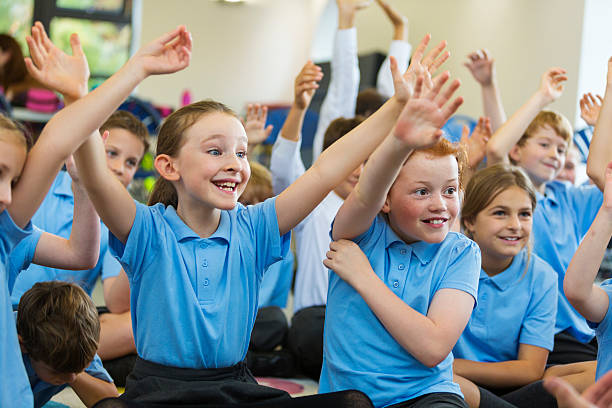One of the biggest misconceptions that I have come across about Teaching for Mastery is that it doesn't involve any differentiation. In some minds, there is a dichotomy between 'Whole class, mixed ability teaching' and 'Differentiated group work'.
How did this arise?
There was definitely a time when differentiation was seen as the answer to all our problems. I used to split my mixed age class into six groups, three from each year, who were all given subtly different tasks, all carefully matched to my perception of their 'ability', which was determined by which table they sat at.This focus was also political. David Milliband, schools standards minister in the mid-2000s, led the drive toward 'personalised' learning. The dream was that every lesson would eventually be differentiated for every child, using a mixture of Assessment for Learning and the wonders of technology.
And now?
The political climate has certainly changed, and the National Curriculum 2014 is an example - the expectation that children work through the curriculum at broadly the same rate, regardless of their individual needs is explicit in Mathematics , and implicit in many parts of the English and Science curricula.
So no more differentiation?
As anyone who has tried it will know, you can't just give everyone in the class the same task and hope it works. It takes a lot more than that. Differentiation still needs to happen, but with a different aim.
Differentiation becomes about supporting the children who need the support so that they can achieve the same as their peers.
Differentiation becomes about supporting the children who need the support so that they can achieve the same as their peers.
How can we do that?
Once you think about differentiation in this way, it may change practice.
- Who supports children - peers, the teacher or an additional adult? It needs to be prompt and effective.
- Who gets supported? Do children have a choice of independence and support? Is it flexible?
- How do children ask for support?
How to differentiate?
Lesson planning
The best strategy for supporting most learners is lesson design. A lesson that has a clear focus, and which builds on existing secure knowledge will usually be more successful than a leap into the unknown. Breaking down the structure of a lesson into a series of small, achievable steps that scaffold the development of concepts allows children who take longer to grasp to keep up.
Representations
Clear and consistent use of representations also keeps the focus on shared understanding. Some children are quick to grasp a superficial aspect of a task that enables them to appear successful.
A confident child can sleep through a lesson on adding fractions, because they have noticed you just need to add the numerators to get the right answer. They may succeed in the lesson, but won't have a model that can be extended to different denominators or multiplications.
Strategies for differentiation
This is an endless list, but it may help you to think about the practicalities.
- Some teachers like to give task choices to allow all children to access challenge. The difficulty may be that the child is not equipped to make the choice. Some children will flounder because they like 'to look clever', whilst others stay in the safety zone of something that they can comfortably do.
- Start a unit or block by reviewing the 'known' learning to check for gaps or misconceptions. Don't reteach the previous year, but set a task that involves prior learning.
- Push on number facts early and often so they don't hold children back when they need them.
- Use an additional adult to look for difficulties in grasping concepts or to identify misconceptions. It helps to do this when there is a lot of partner talk or representation going on, so that the adult can listen in. It also means the adult has to 'float'.
- If there are gaps that are not going to be addressed during teaching, provide opportunities for pre-teaching or planned interventions. The focus should ideally be on 'keeping up' rather than 'catching up'.
- Have a planned strategy for supporting these children. This may mean breaking down the task further or modelling it. Try to avoid taking children out of lessons.



